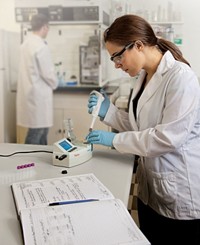Advertisement
Grab your lab coat. Let's get started
Welcome!
Welcome!
Create an account below to get 6 C&EN articles per month, receive newsletters and more - all free.
It seems this is your first time logging in online. Please enter the following information to continue.
As an ACS member you automatically get access to this site. All we need is few more details to create your reading experience.
Not you? Sign in with a different account.
Not you? Sign in with a different account.
ERROR 1
ERROR 1
ERROR 2
ERROR 2
ERROR 2
ERROR 2
ERROR 2
Password and Confirm password must match.
If you have an ACS member number, please enter it here so we can link this account to your membership. (optional)
ERROR 2
ACS values your privacy. By submitting your information, you are gaining access to C&EN and subscribing to our weekly newsletter. We use the information you provide to make your reading experience better, and we will never sell your data to third party members.
Business
Instrumentation: Firms Plan For The Long Term Amid Short-Term Uncertainties
by Ann M. Thayer
January 14, 2013
| A version of this story appeared in
Volume 91, Issue 2

As instrumentation companies plan for 2013, uncertainties that fogged 2012 are still clouding the view. Fiscal pressures on U.S. spending, weakness in the economic-crisis-hit eurozone, and mixed signals from emerging markets remain troubling, at least for the short term.
The total market for analytical and lab instruments was about $44 billion in 2012, according to the market research firm Strategic Directions International. For 2013, instrument makers are predicting that the rate of sales growth will stay in the low single digits, at least in the early months.
Agilent Technologies is predicting about 3.5% revenue growth for its fiscal year, which will end Oct 31. “We’re assuming there will be no new financial crisis in the U.S. or Europe,” CEO William P. Sullivan told stock analysts in late 2012. “However, continued uncertainty will dampen demand until the second half.”
Spending by academic and government customers likely will stay constrained, especially in the West, and industrial markets will be slow, suppliers say. Many are upbeat, however, about the megatrends in the global energy, environmental, forensics, and food sectors. And the drug discovery and diagnostics areas should remain stable, they say.
Despite the short-term challenges, “there is long-term promise in many end-use markets,” says Mike McMullen, president of Agilent’s chemical analysis group. Although making a call on 2013 is difficult, the “megatrends are here to stay,” he adds.
Many firms plan to expand further in emerging regions. Although China’s economy slowed in 2012, the country remains attractive. “Limited local competition and an intense government focus on lab infrastructure build-out and academic research make the life sciences tools and diagnostics industries well positioned in China,” Goldman Sachs analyst Isaac Ro pointed out in a late-2012 report.
Healthier growth rates in emerging versus mature markets are causing a shift in emphasis by suppliers, Thermo Fisher Scientific CEO Mark Casper told analysts in late 2012. “You’re going to see more investment in those markets and a tighter level of investment control in Western Europe and the U.S.”
Thermo, for example, has been decreasing its manufacturing footprint overall but building in low-cost regions. “While we have a lot of initiatives in place to position the company for growth, we are also being prudent and carefully managing our costs,” Casper said. “We’ll closely monitor the market environment, and we’ll take additional cost actions as necessary.”
Watching costs is important, but so too is investing in R&D and others areas, PerkinElmer Senior Vice President Dusty Tenney says. “If we don’t invest, we’ll end up losing windows of opportunities, not only in 2013, but ones that can help further the business in 2014 and 2015.”
MORE ON THIS STORY
- - World Chemical Outlook
- - Pharmaceuticals: Companies Will Focus On External Partnerships To Improve Productivity
- - U.S.: Domestic Manufacturing Slowdown Will Be Offset By Shale Gas Upside
- - Construction: The Action, Once Again, Is In Developing Countries
- - Europe: Economy And Chemical Industry Are Expected To Stagnate
- - Fine Chemicals: Optimism Prevails Over Uncertainty
- - Asia: Slowdown In China, Although Mild, Is Cause For Concern
- - Petrochemicals: The U.S. Will See A Boom As Europe And Asia Struggle
- - Cleantech: New Funding Will Be Scarce, But Scale-Up Plans Continue
- - Specialties: Growth To Be Fueled By Autos, Electronics
- - Canada: After A So-So 2012, Chemical Firms Prepare For A Brighter Future
- - Instrumentation: Firms Plan For The Long Term Amid Short-Term Uncertainties
- - Middle East: After Years Of Growth, A Profits Squeeze Lies Ahead
- - Advanced Materials: Carbon Fiber, 3-D Printing, Graphene To Make Inroads
- - Latin America: Policymakers, Industry Seek To Boost Competition






Join the conversation
Contact the reporter
Submit a Letter to the Editor for publication
Engage with us on Twitter